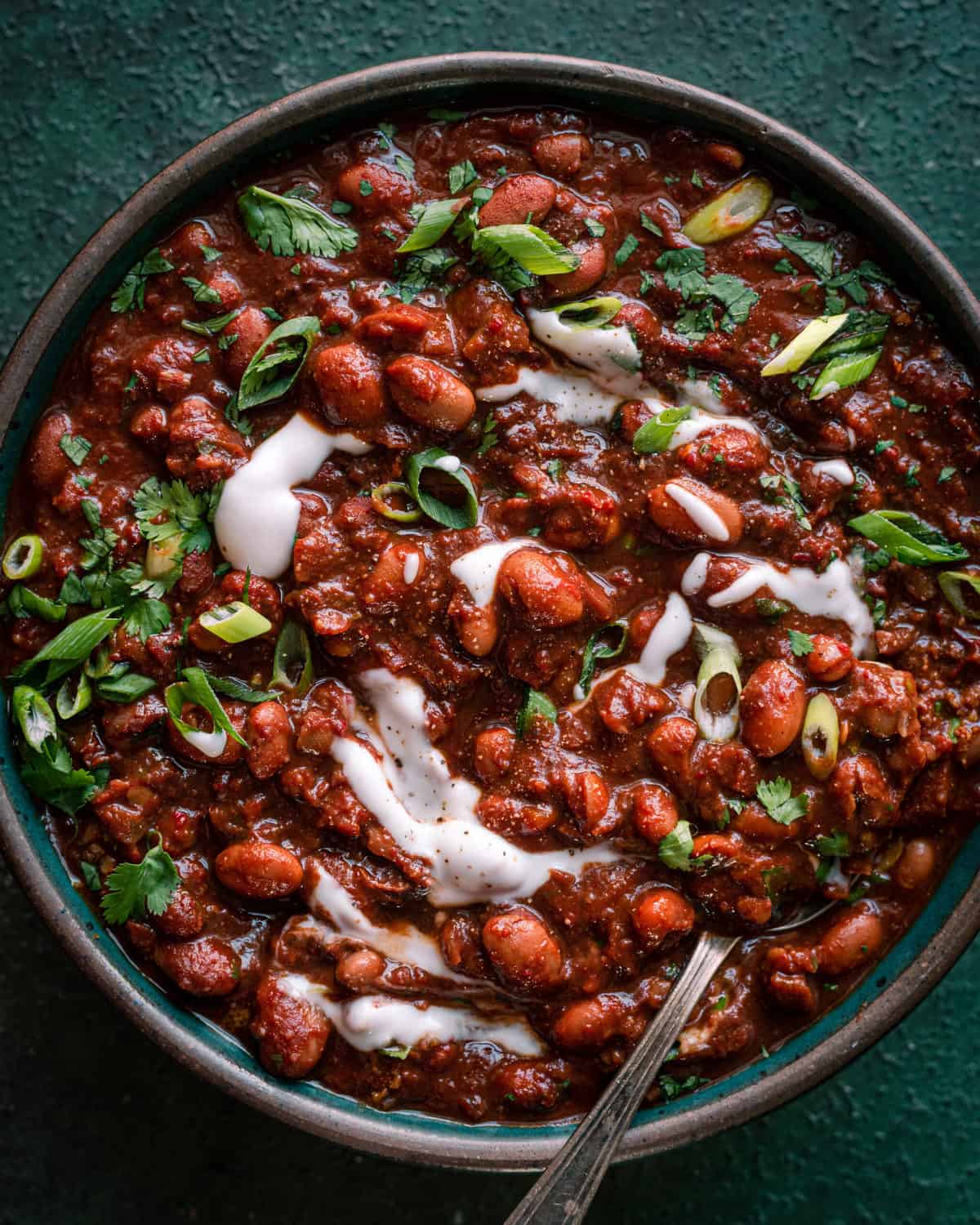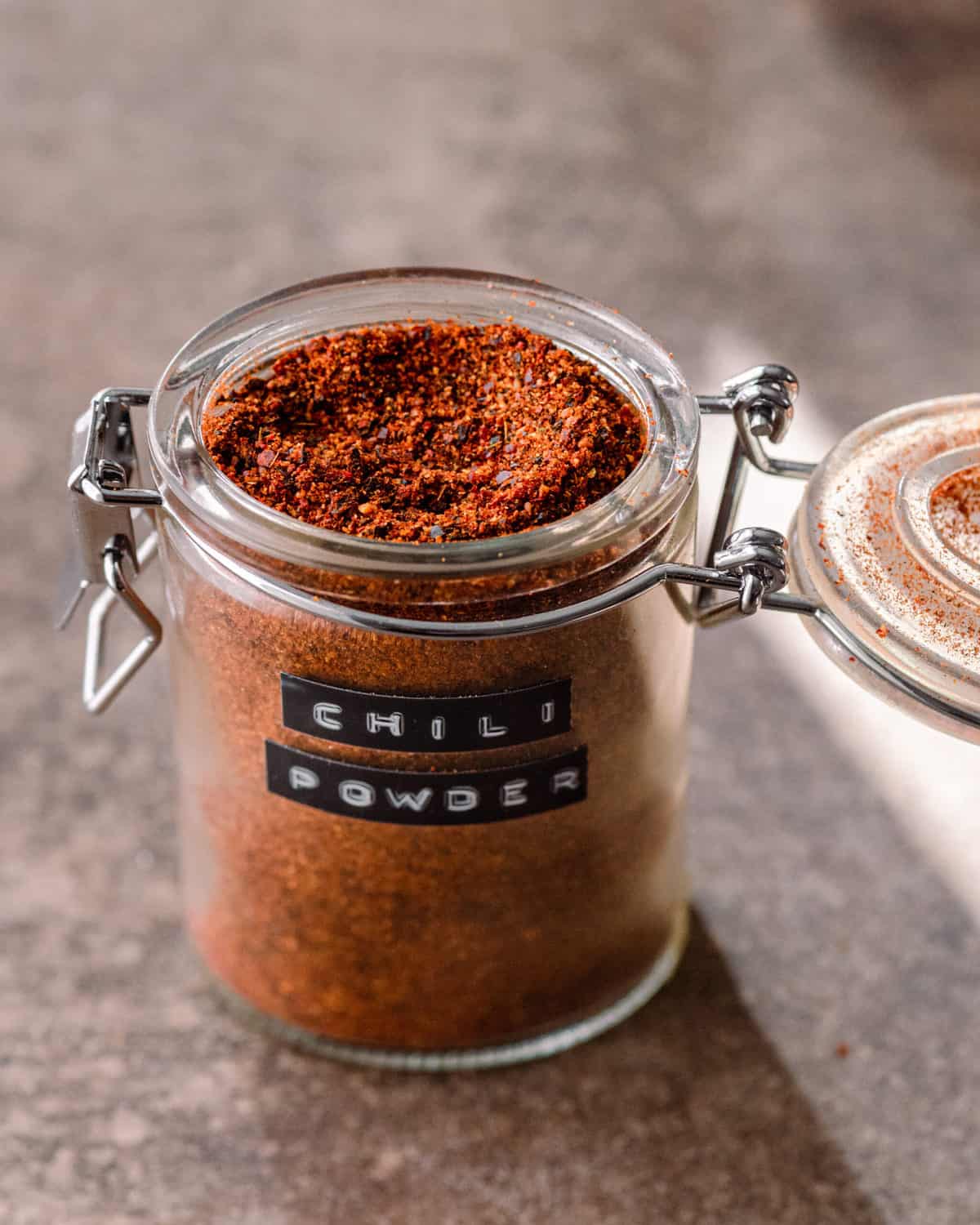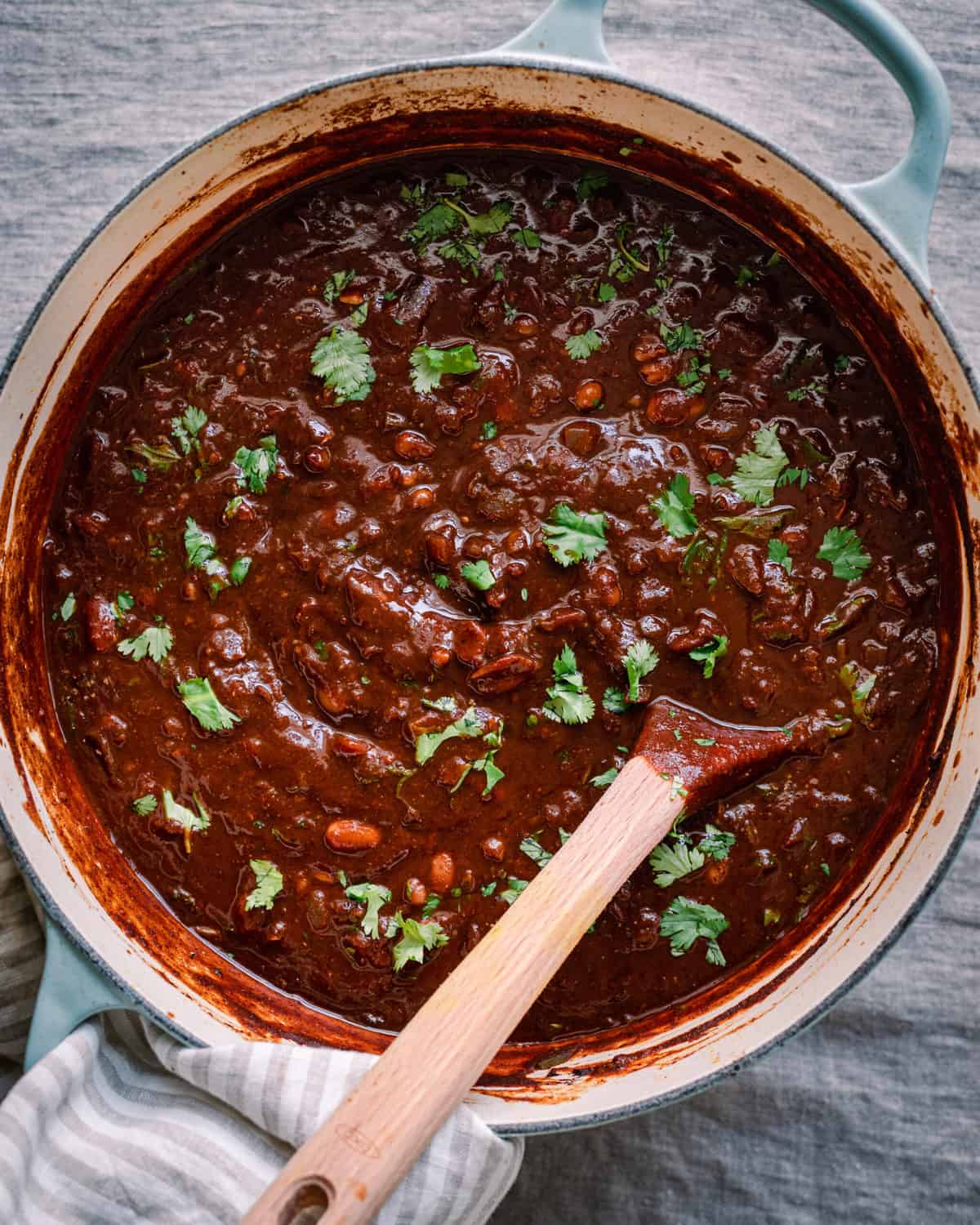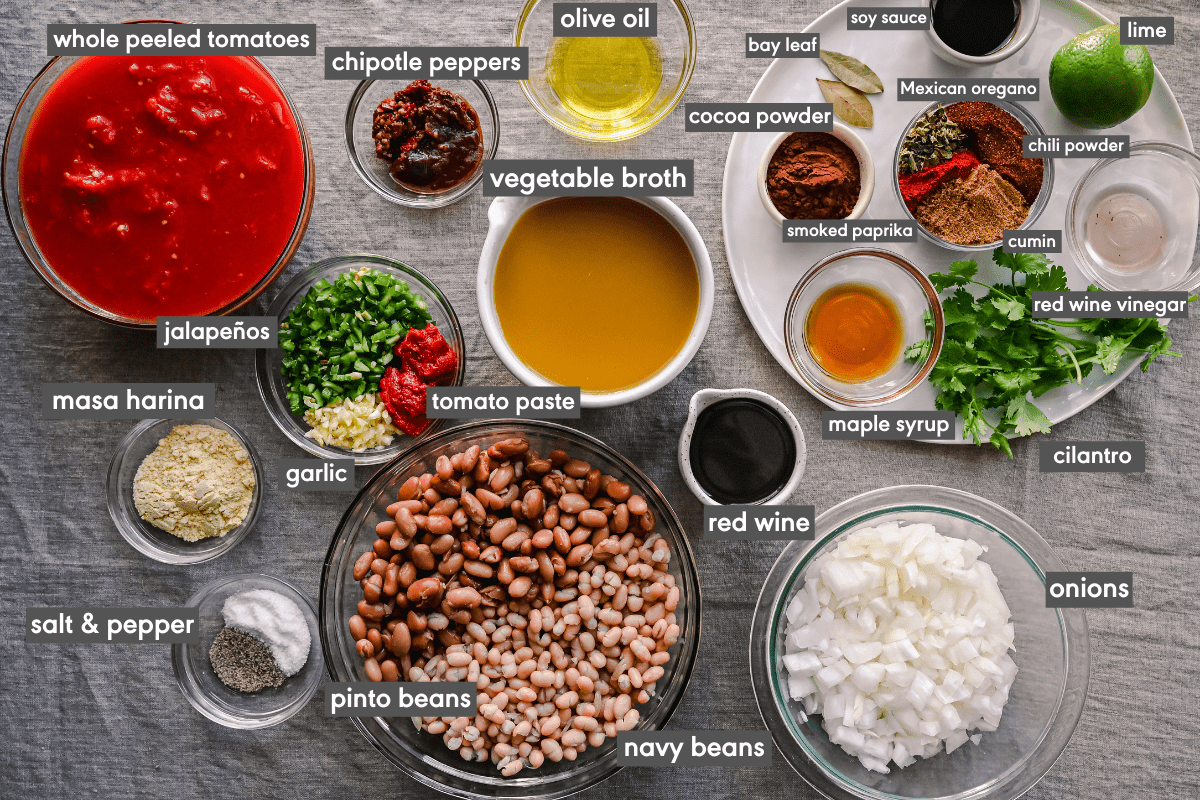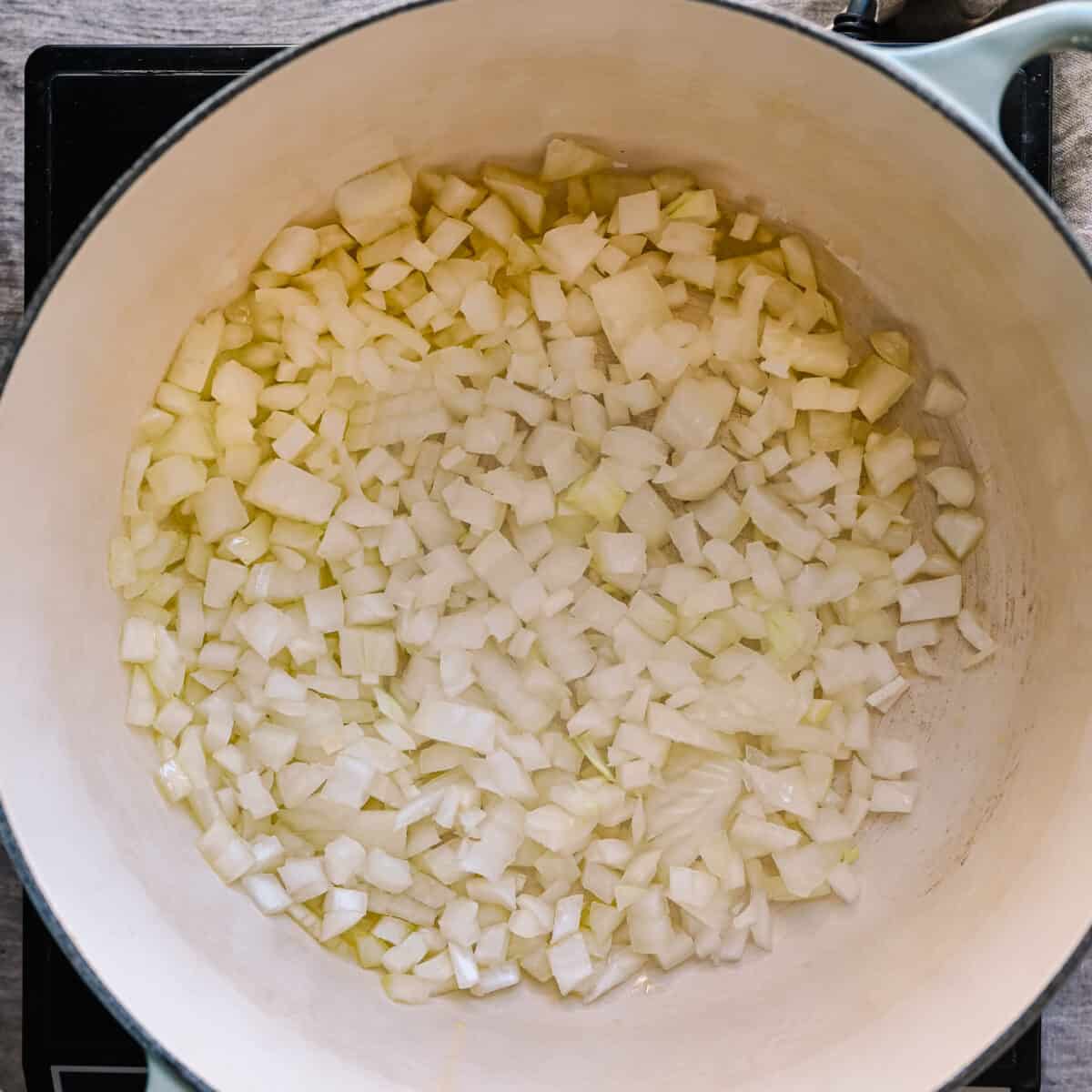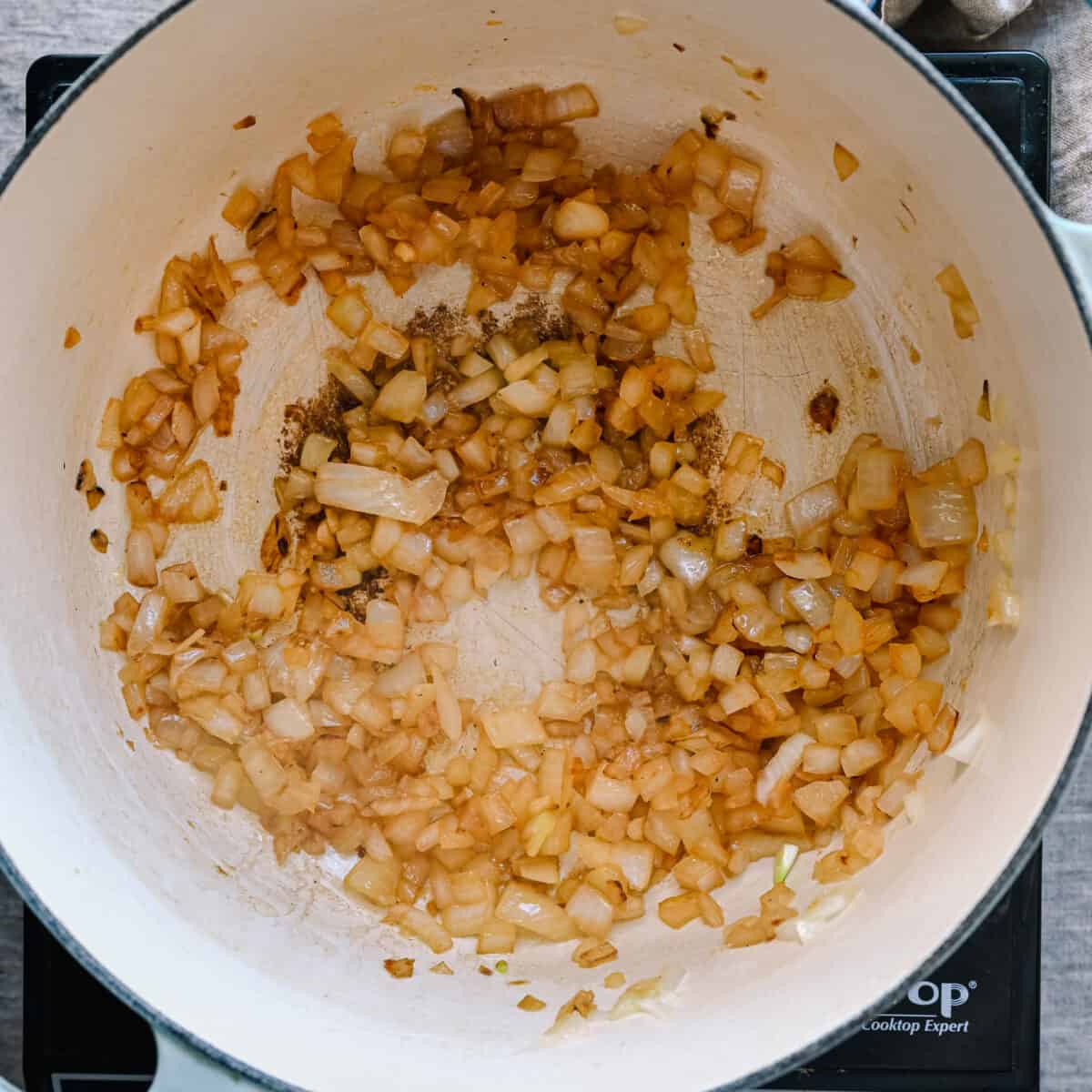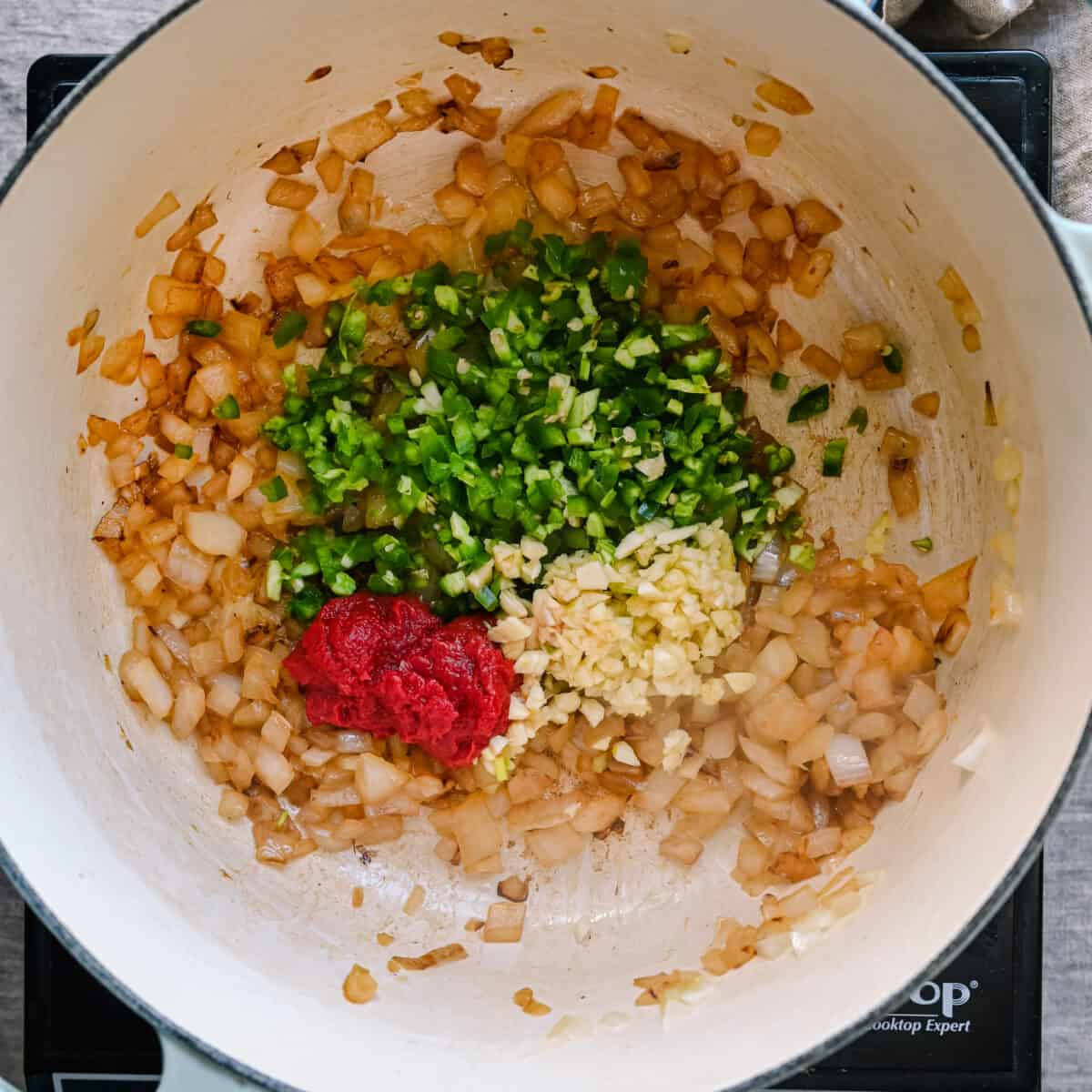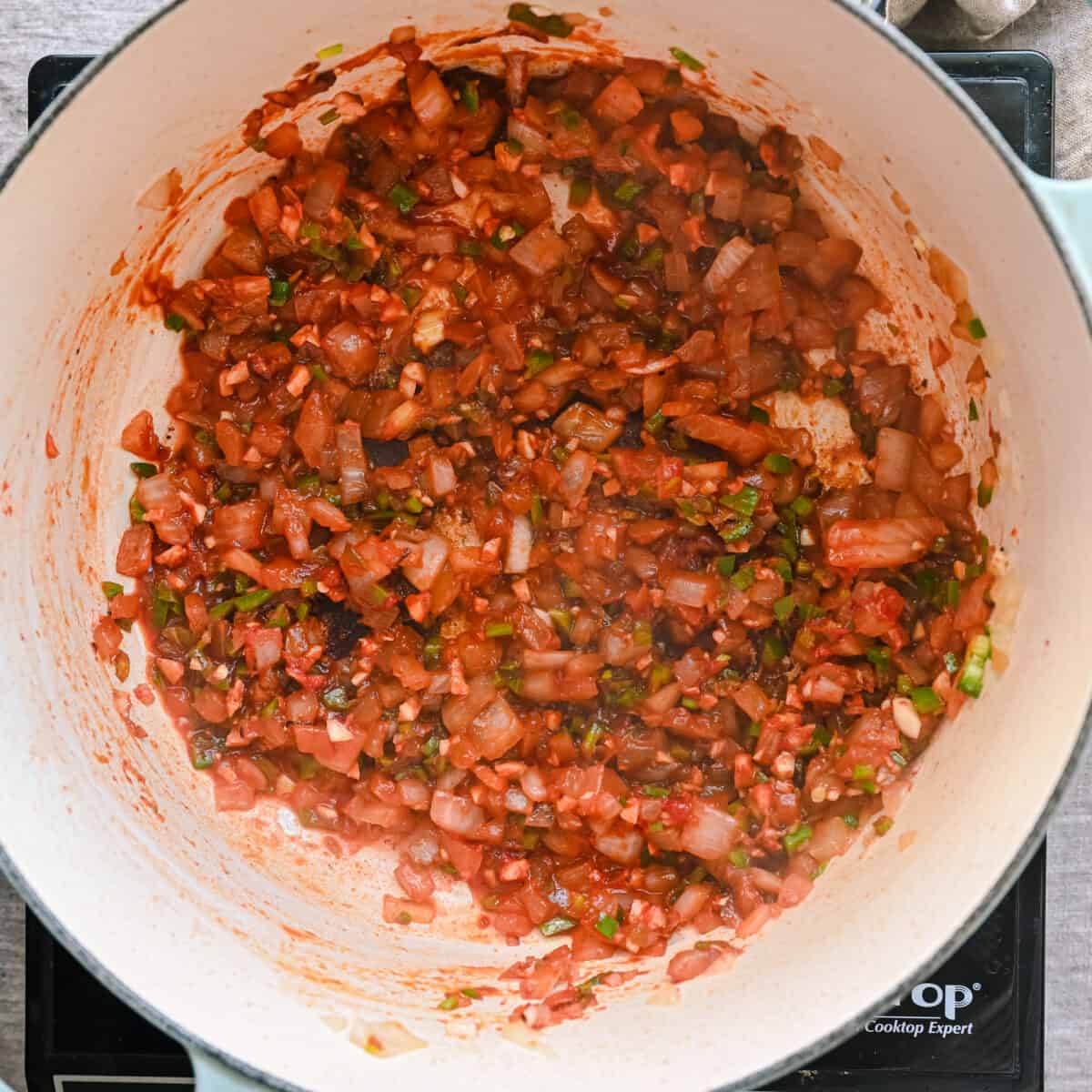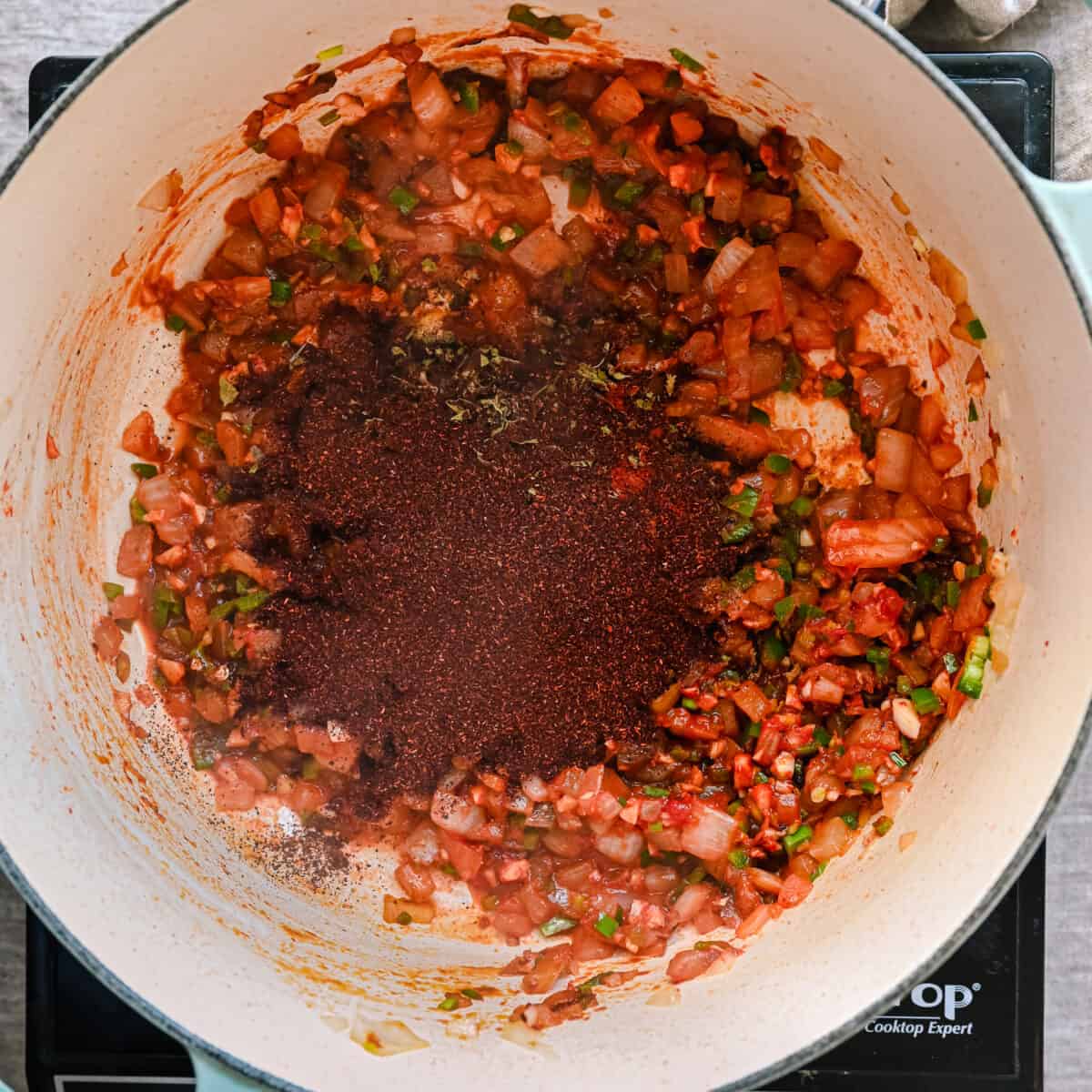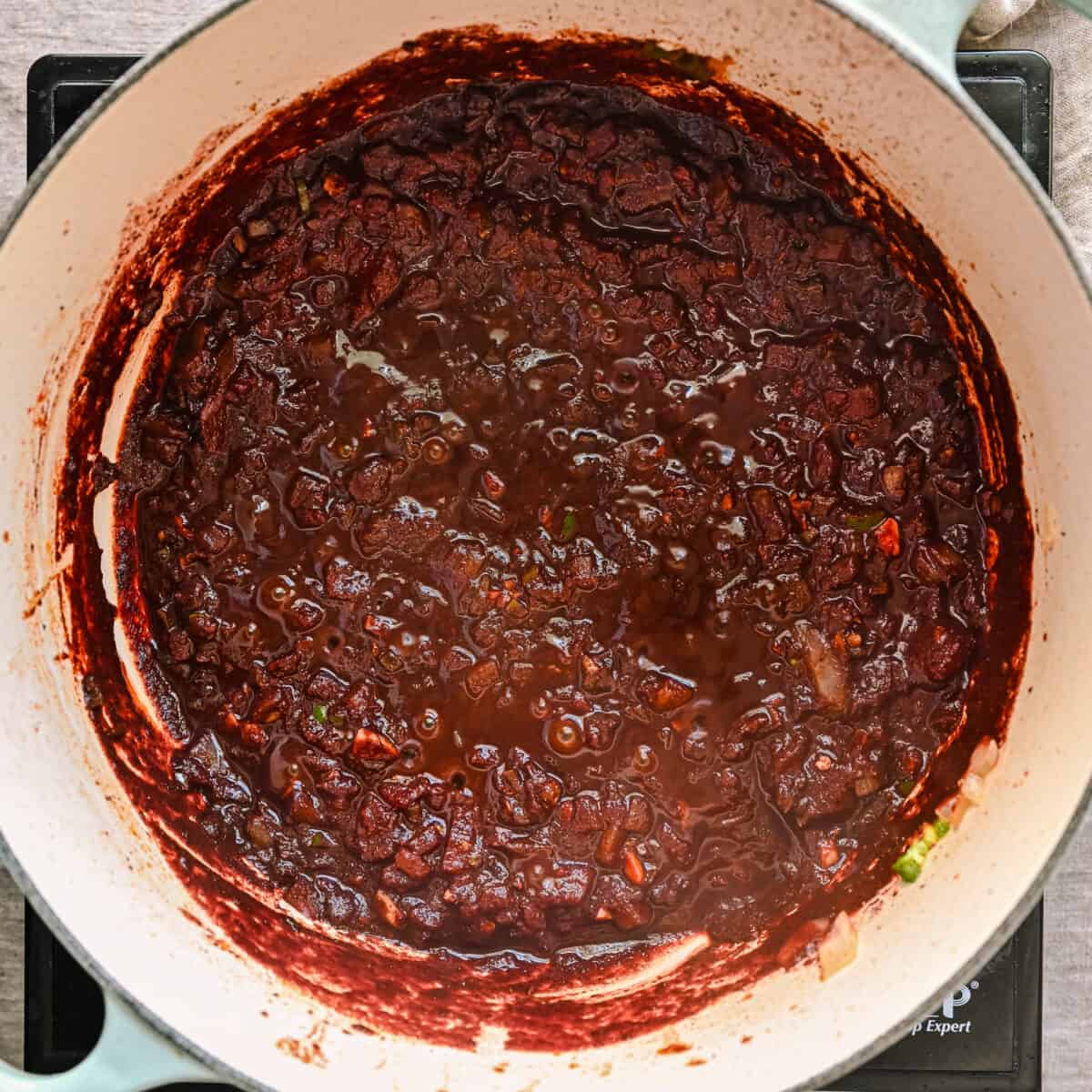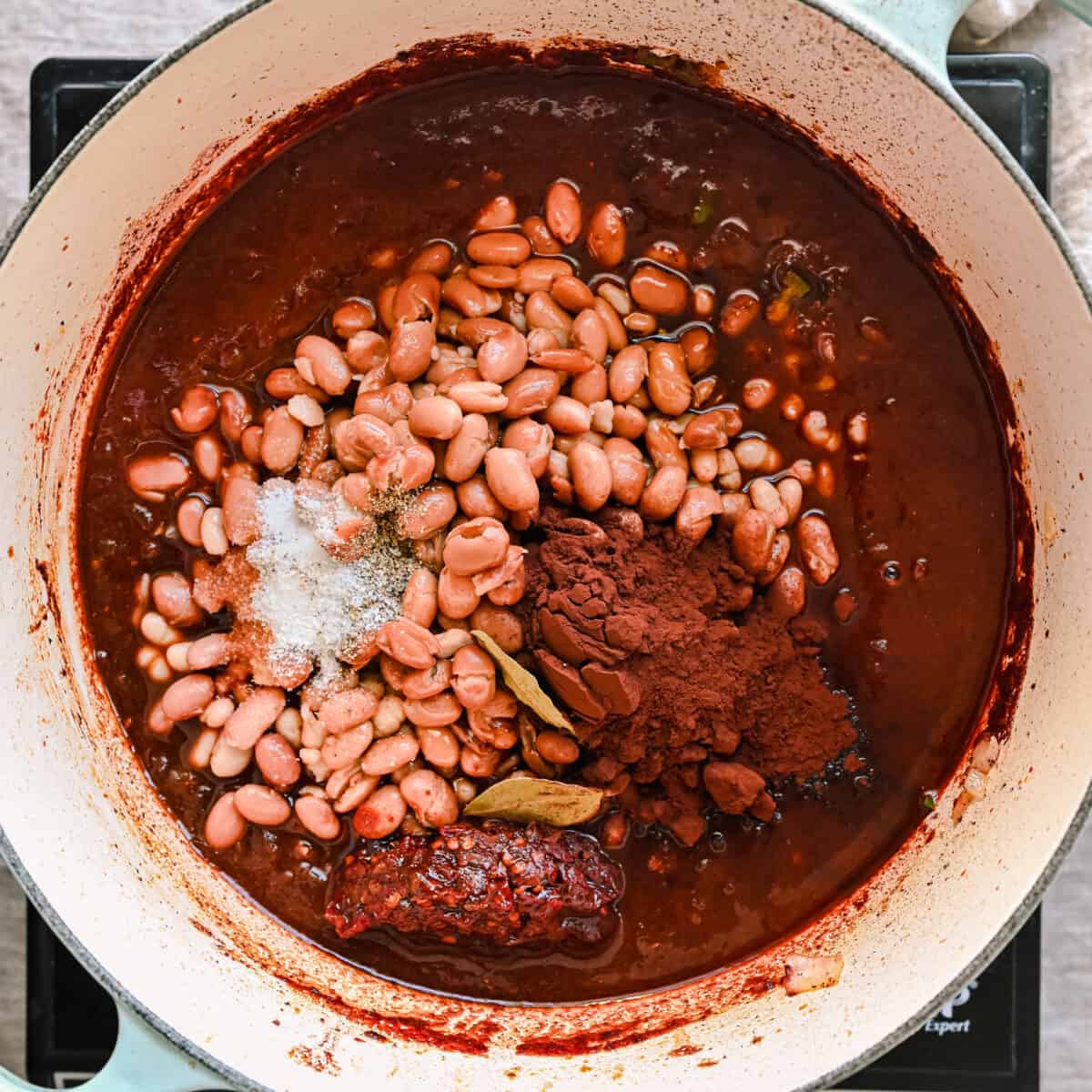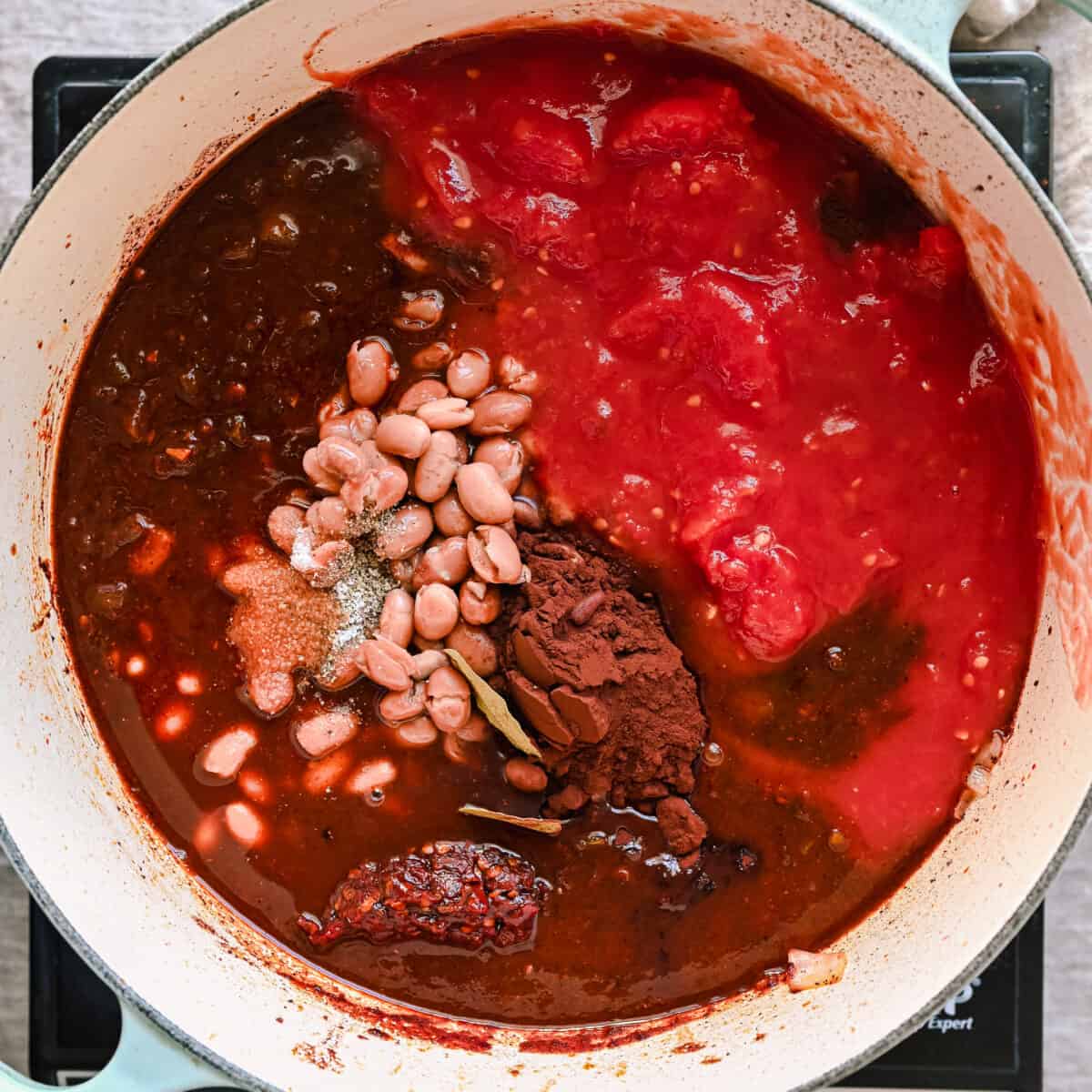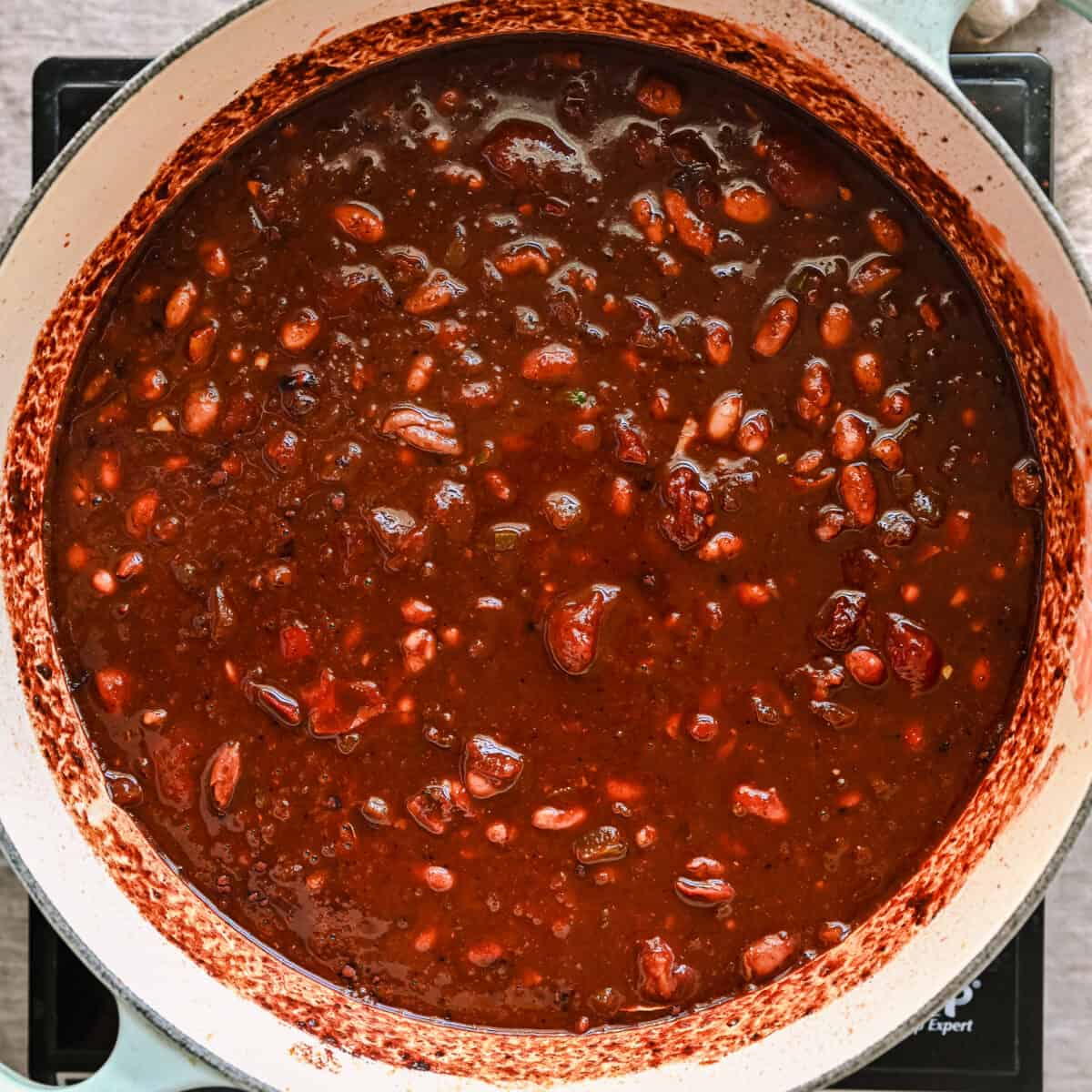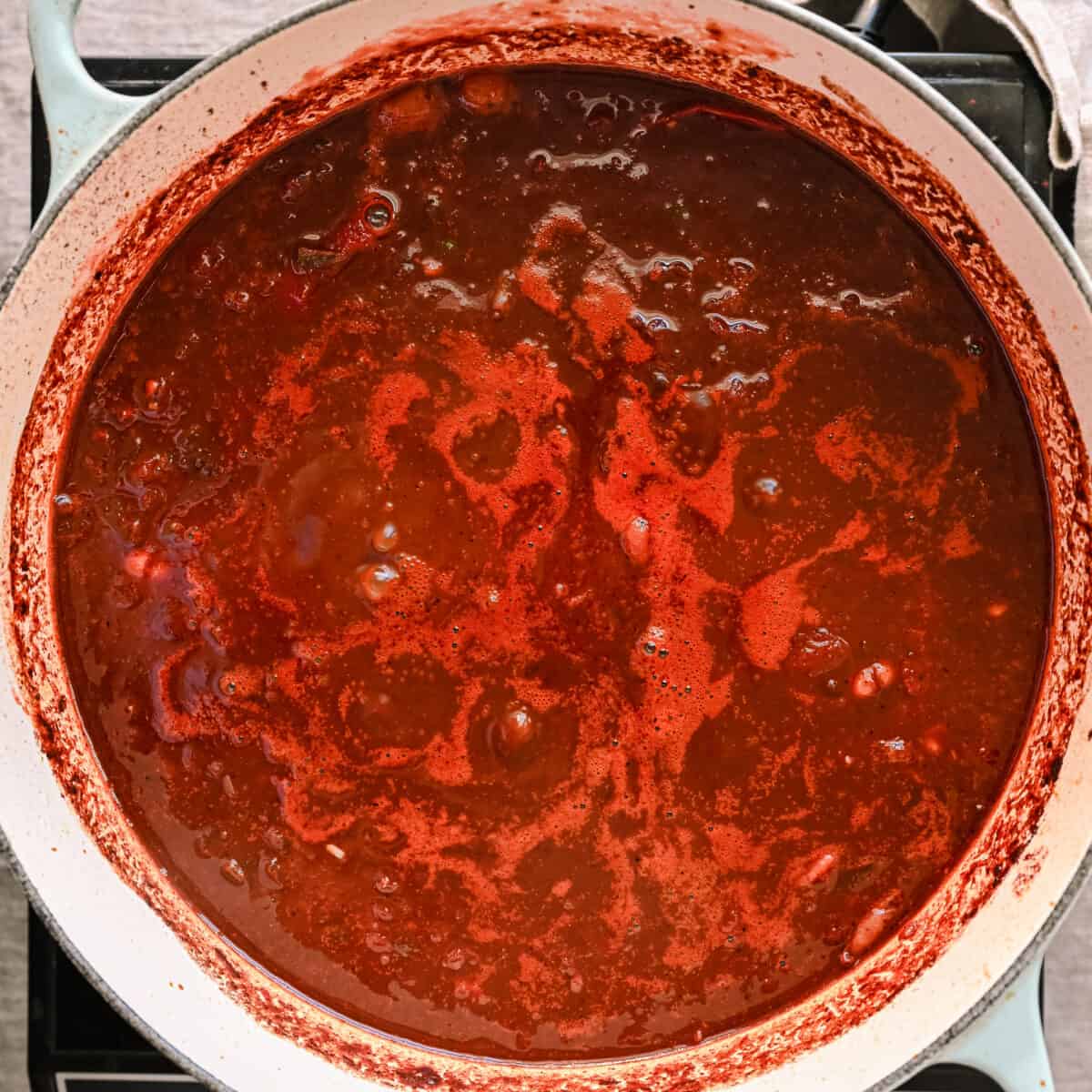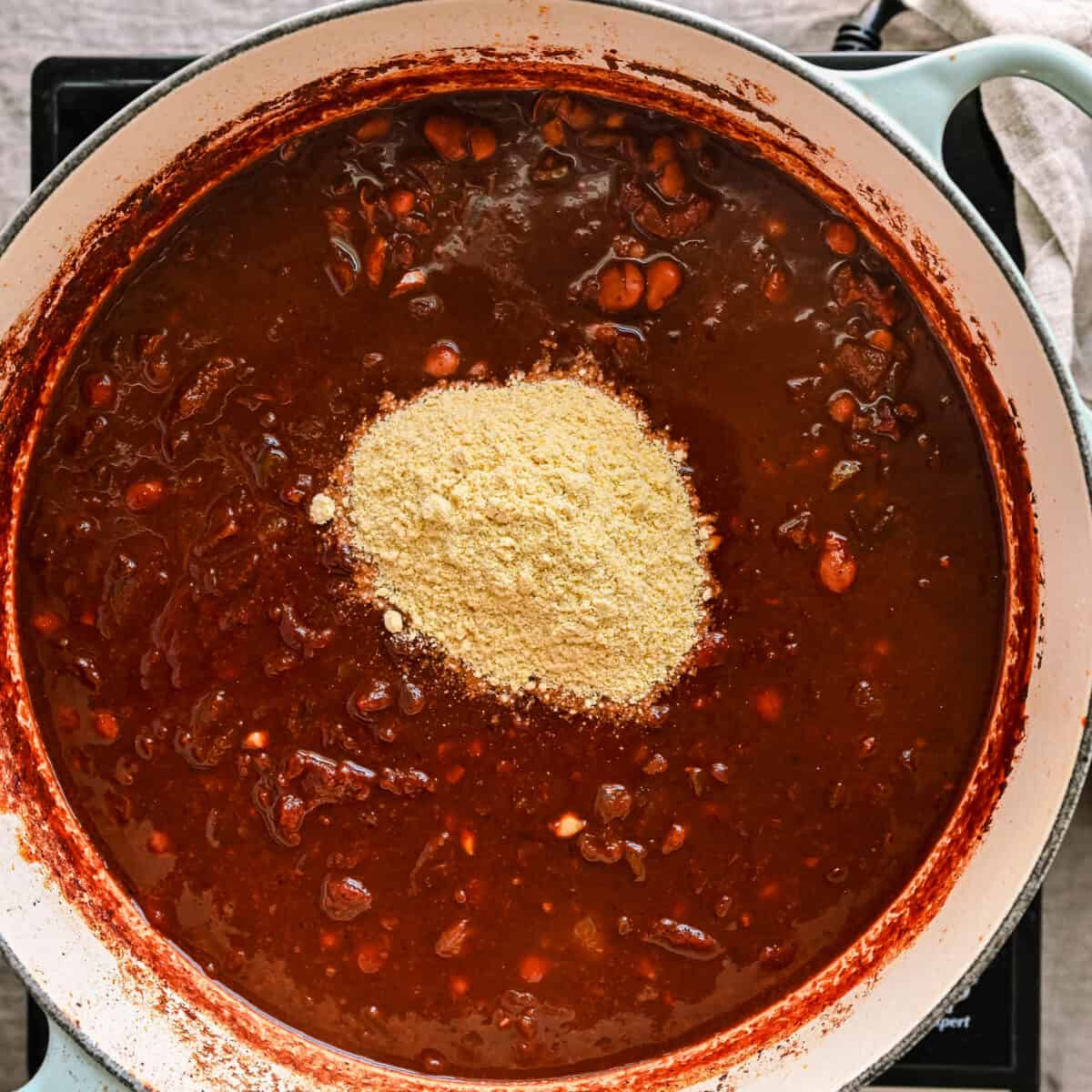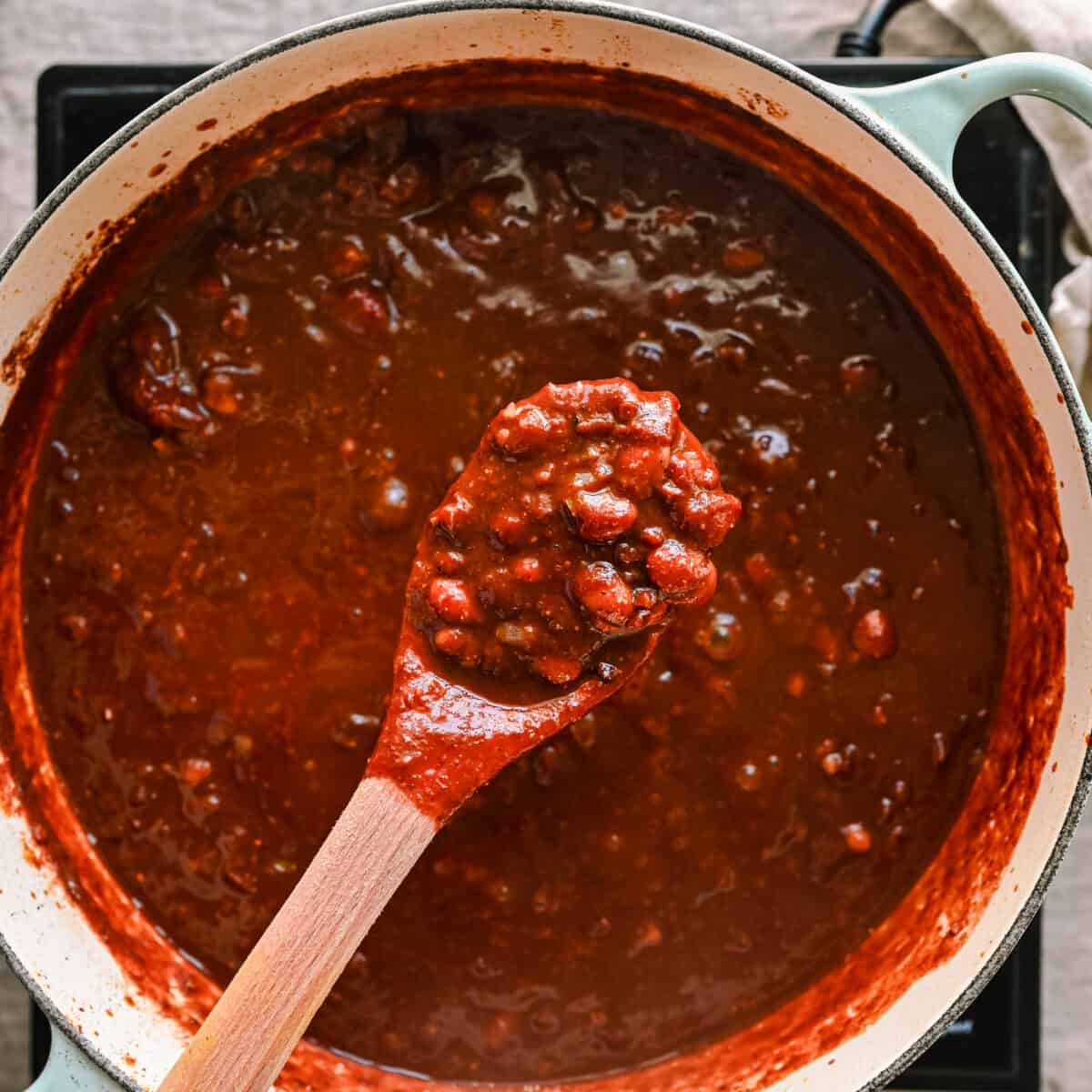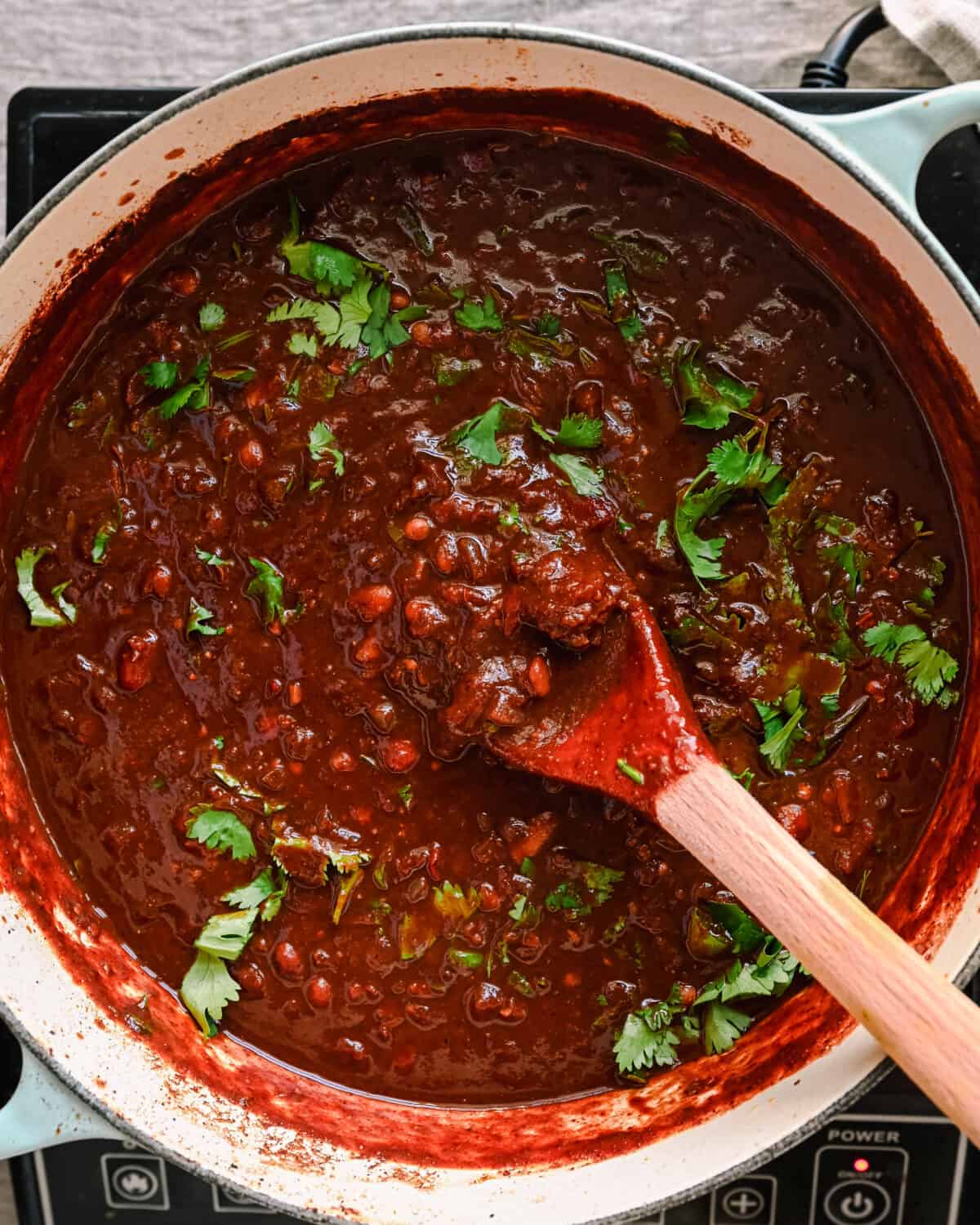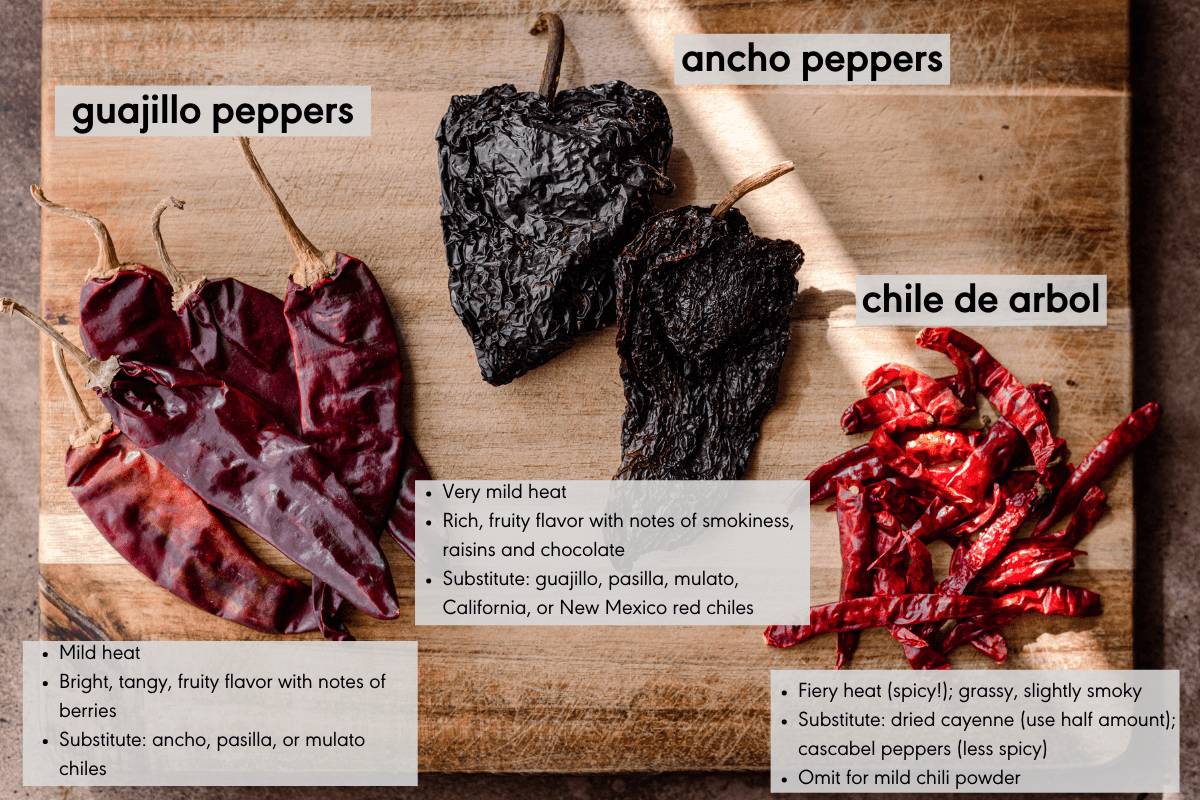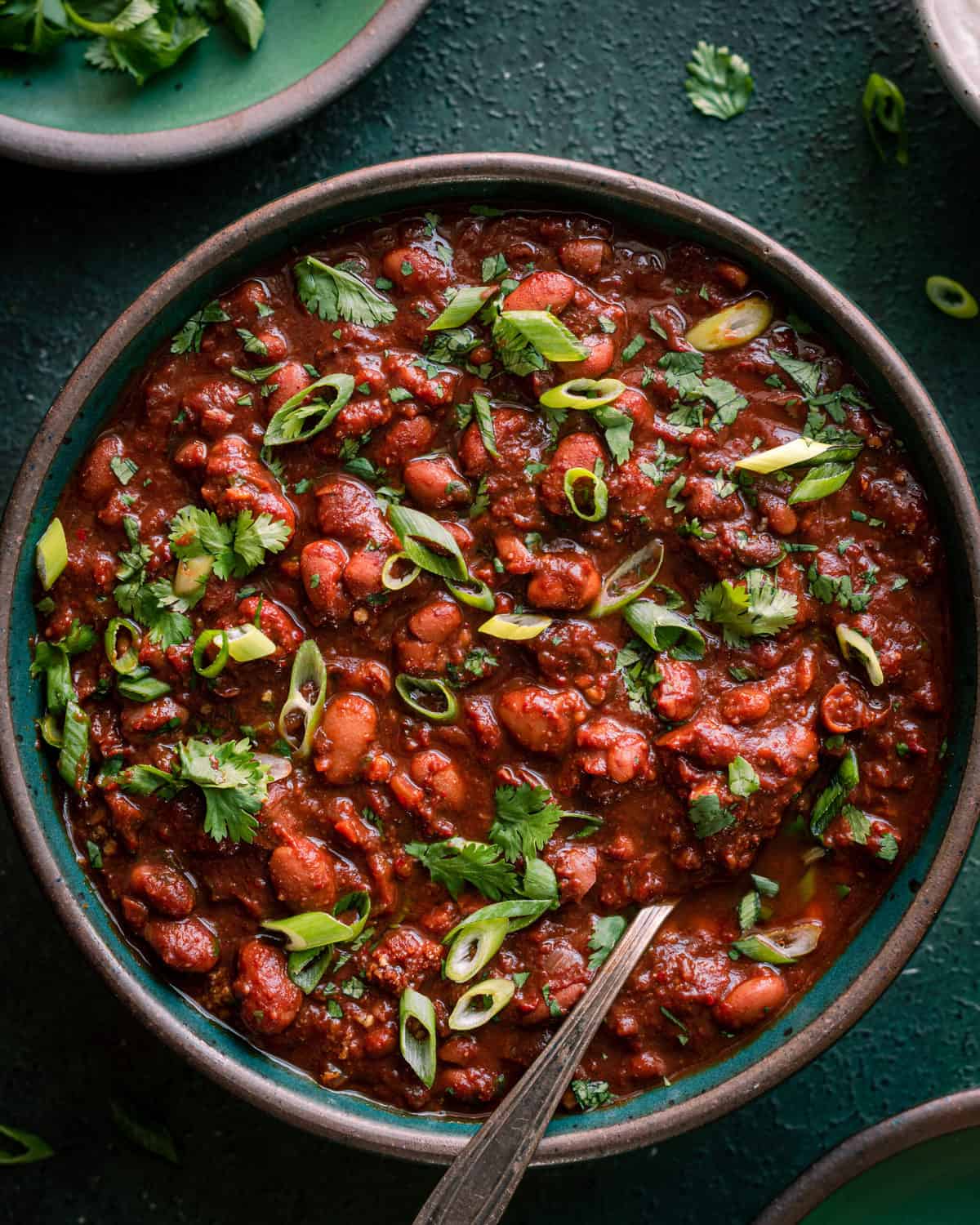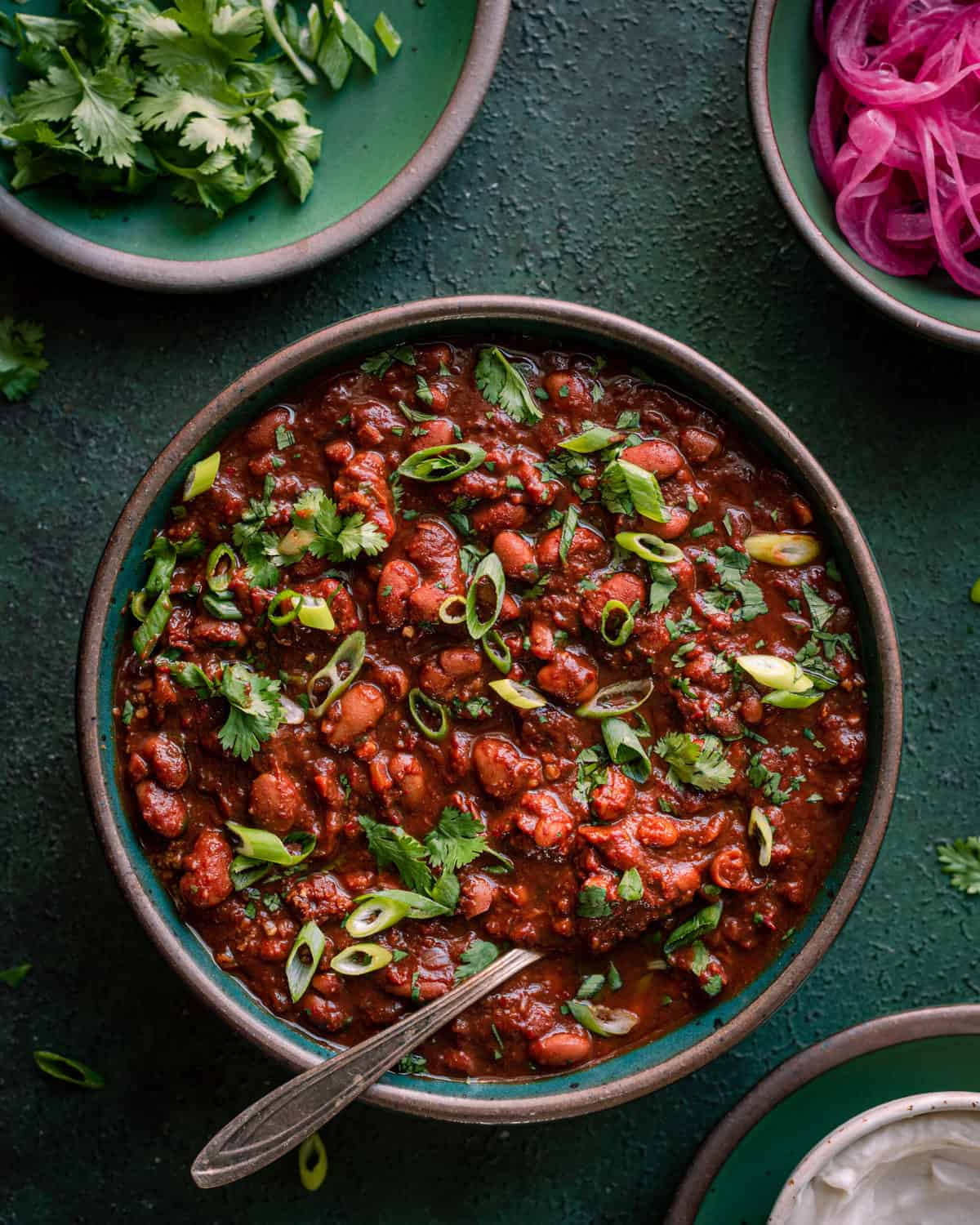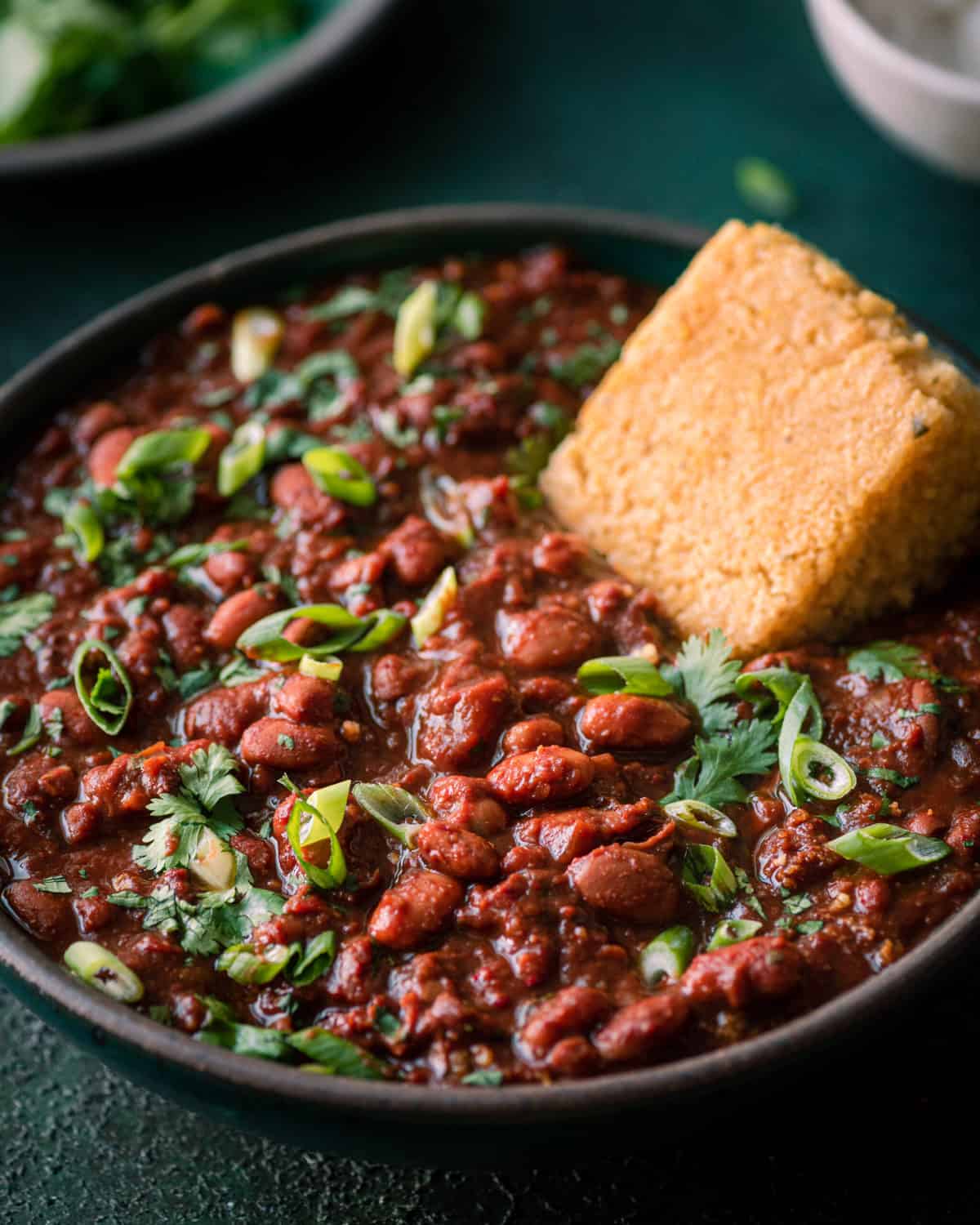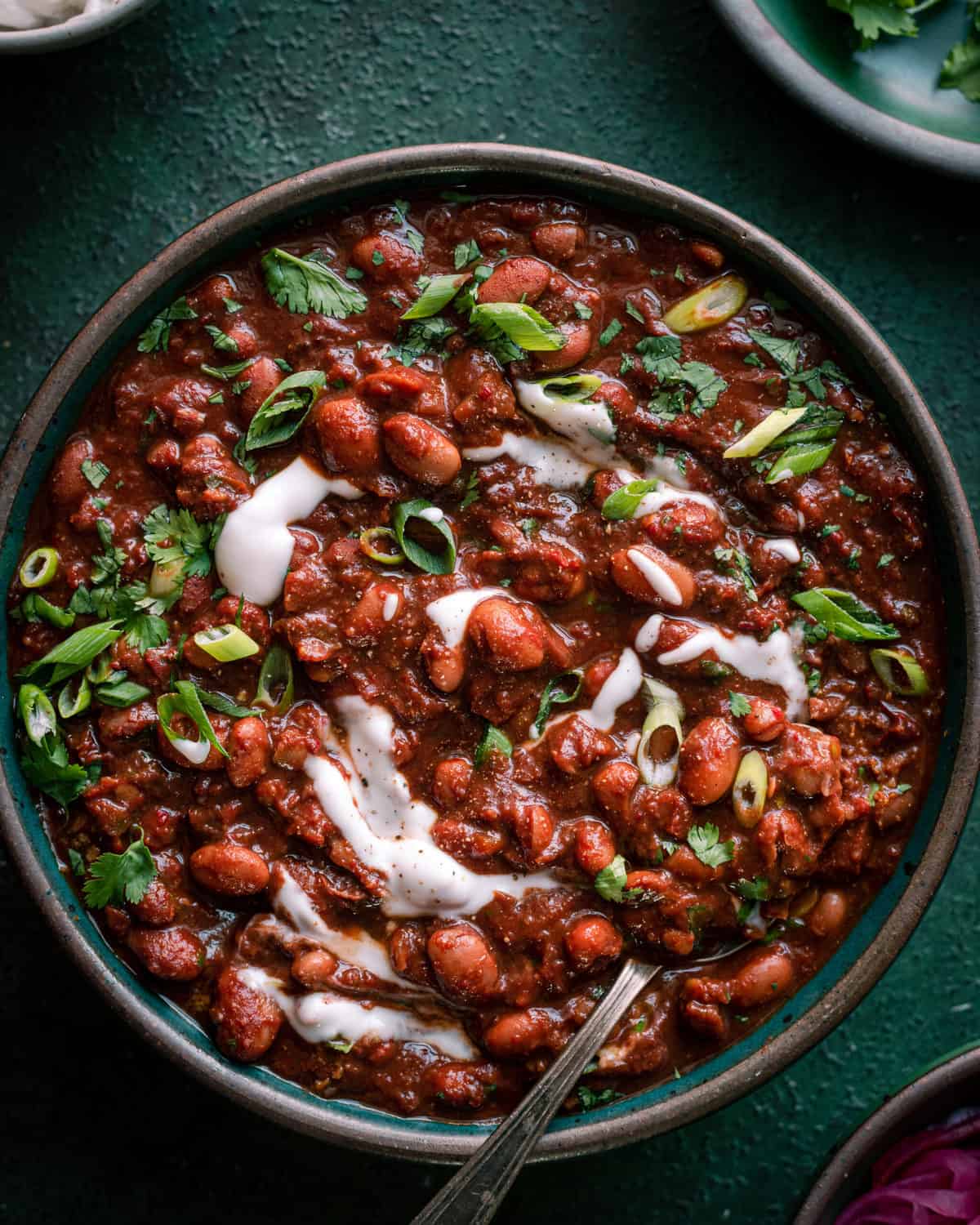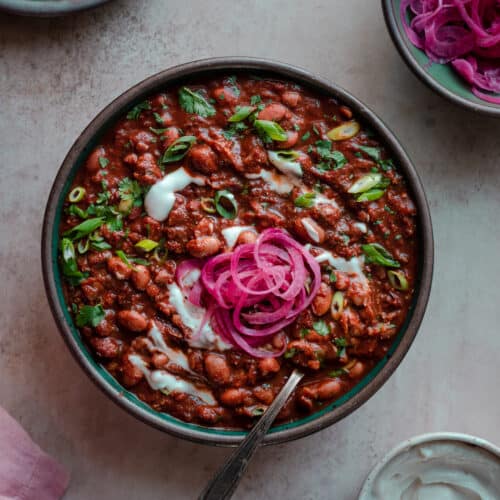Most vegan chili recipes have you take so many shortcuts that you end up with a bowl of bean soup dressed up with some chili powder. But if you’re willing to follow the steps in this recipe, you’ll be rewarded with an authentic bean chili unlike any other.
Many dried chile peppers carry notes of fruit, berries, chocolate, coffee, and/or raisins, adding layers of rich flavors. And when you layer homemade chili powder with fresh jalapeños and canned chipotle peppers, you get layer upon layer of complementary warming flavors: smoky, fruity, grassy, all in one bowl of chili.
If you don’t want to take my word for it, listen to what professional chefs say:
Plus, it only takes about 10-15 minutes to make chili powder, and it will stay fresh for 6 months. Which means you can make a killer chili whenever the mood strikes.
Note: Instructions for my homemade chili powder are in the second recipe card at the bottom of this post. While I think it’s worth making your own chili powder, I have tested this particular recipe with store-bought chili powder and it’s still great (because this recipe uses many other “secrets”/techniques to amp up the flavors). If using pre-made chili powder, I recommend ancho chili powder (made from just ground ancho chile peppers). It’s more flavorful than the standard chili powder, which is a blend of seasonings.
First, many spices are bitter when uncooked (taste a pinch of ground cumin or oregano, and you’ll know what I mean). As a result, your final dish ends up with bitter notes.
Two, when you toast spices first (in a bit of oil, usually after or along with the aromatics), you draw out their essential oils. This heightens the spice’s true flavor, so that you actually taste a hint of cumin or oregano in your final dish.
Takeaway: Always toast your ground spices (e.g., chili powder, cumin, oregano) before adding the liquid (e.g., vegetable broth) to draw out their flavor. The toasting will happen quickly, in about 30 seconds.
First, cook tomato paste for a few minutes. This caramelizes it and unleashes the natural umami found in tomatoes, especially a concentrated form of tomato.
Second, add soy sauce, which lends a potent form of plant-based umami and saltiness that salt alone can’t bring.
Third, use whole peeled canned tomatoes and crush them by hand (they have more pure tomato flavor and no additives, compared to pre-diced or pre-crushed tomatoes).
Note: If you have vegan Worcestershire sauce on hand, it would be a great sub for the soy sauce.
First, red wine, which intensifies all the aromatics, spices, and chili peppers in a way that vegetable broth alone cannot. Also, it adds to the rich body of the chili (you’ll notice as the wine deglazes, the mixture becomes SO jammy). While beer is more traditional in chili, every time I’ve made chili with beer, it ends up too bitter for my taste.
Second, cocoa powder. It sounds funky, but lots of chili recipes actually add a small amount of dark chocolate or cocoa powder. Chocolate not only adds depth of flavor but also accentuates the fruitiness of the dried chili peppers.
Third, instead of using only pinto beans, I add in one can of navy beans. Since they’re so small, they partially disintegrate during simmering, which naturally thickens the chili.
Finally, masa harina, AKA Mexican corn flour. When stirred in at the end, it thickens the chili even more, gives it a velvety texture, and a nice subtle corn flavor. This chili recipe is already quite thick, so I’d say this ingredient is optional.
Takeaway: Chili should be rich both in taste and texture. Red wine, cocoa powder, and masa harina all contribute to that.
5. Slow simmering is key for texture and flavor
Step-by-step instructions
Gather your ingredients! This is because the flavors of chili always improve with a long, slow simmer. Slow simmering also contributes to a thicker, more unctuous consistency, so that every bite has the same flavor and texture (check out that velvety texture in the photo below!). Takeaway: Gently simmer this chili for 1 1/2 hours (or up to 2 hours) for maximal flavor and the most luxurious texture.
Tips for making this recipe
Balance the flavors:
The reason I add maple syrup to my chili is that it sweetness balances both the spiciness and bitterness inherent in chile peppers. I finish the chili with lime juice and vinegar because sour flavors also mellow bitter tastes; they also enhance the umami found in soy sauce and tomatoes. Add the garlic, jalapeños, and tomato paste. Cook for 2-3 minutes, or until the tomato paste darkens. Deglaze the pot with the red wine, scraping up the browned bits. Add the vegetable broth, and scrape up any additional browned bits. Add the pinto beans, navy beans, chipotle peppers in adobo, bay leaves, salt & pepper, cocoa powder, maple syrup, and soy sauce. Crush the tomatoes and add in. Bring the chili to a boil, then reduce to a gentle simmer. Simmer for 1 1/2 hours, stirring every 10 minutes, until thick and velvety. Stir in the masa harina, if using, and simmer for 3 minutes, until further thickened. Add the cilantro, lime juice, and vinegar. Taste, adding more maple syrup or lime juice as needed. Season with salt and pepper.
How to make homemade chili powder
I highly recommend making your own chili powder. It might seem daunting, but I promise it’s actually quite simple. If you’re unable to do this, substitute with store-bought ancho powder and check out the notes in the recipe card.
Where can I buy dried chili peppers?
You can find a variety of dried chile peppers at Mexican grocery stores, some standard grocery stores such as ALDI, as well as online. If buying online, I recommend the chili peppers from the brand Ole Rico. They are super fresh and have a much softer texture (an indicator of freshness) than other dried peppers I’ve tried. They also sell a three-pack of the exact variety of chili peppers I use in my chili powder! (affiliate link).
How to select dried chile peppers for chili powder
For complex yet balanced flavors, I use three different chile peppers. Check out the graphic below for the flavor profile, heat level, and substitutes for each chile pepper. Tip: You can tailor the spiciness with the amount of chile de arbols you add. Omit entirely for a mild chili powder (same heat level as a store-bought chili powder). Add 2 peppers for a moderate heat, or up to 5 peppers for a spicy, spicy(!) heat.
Tips for working with chile peppers
First, open up the peppers to remove the seeds and membranes (they’re bitter). I find it’s easiest to gently tear open the peppers with my hands, but some people use kitchen shears. Be sure to wash your hands afterwards (or wear food-safe gloves if you have sensitive skin). Second, toast the peppers. It releases their natural oils and reinvigorates them, giving the chili powder (and final chili) more complex flavors. We tested this recipe with untoasted chile peppers and it was good, but lacked some of the warm depth of flavor and tasted overall lighter and less complex. When toasting the peppers, watch them closely and cook very briefly, maybe 1 minute per side. If they blacken or scorch, they get bitter. Small peppers, like chile de arbol, don’t need much time–maybe 20-30 seconds per side. Allow the chilies to cool before grinding them. You’ll need a spice grinder (affiliate link), a high-powered blender like a Vitamix, or a food processor. Grind the peppers with the toasted whole spices until pulverized. Add in your pre-ground spices, blend again, and that’s it! It’s critical to taste the chili after it’s simmered to see what flavors it needs more or less of. If you use a store-bought ancho chili powder, for instance, your chili might be slightly less bitter. So you won’t need as much less lime juice or maple syrup to balance it out.
Chili always tastes better the next day.
When chili rests overnight, the chili powder and spices have a chance to meld with the other flavors so you end up with a chili that has more harmonious flavors.
Watch! How to make vegan chili
That’s all you need to know about making this incredible vegan chili! If you love this recipe, please rate and review it below! If you don’t love spicy food as much as I do, here are different ways to scale back on the heat. Jalapeños: use one pepper and remove the the membranes (I wouldn’t omit the jalapeños entirely). Chipotle peppers in adobo: use just 1 chipotle pepper and 1 teaspoon adobo sauce. Homemade chili powder: omit the spicy chile de arbol peppers (or use just 1 to 2 of them).
Big Vegan Flavor
Techniques and 150 recipes to master vegan cooking.
Big Vegan Flavor
Techniques and 150 recipes to master vegan cooking.
